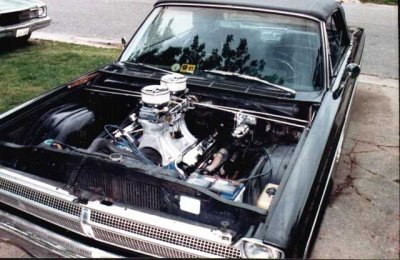66four40
Well-Known Member
Here is as much about the combo as I know. I bought the car last November and only have one summer under my belt. This is also my first old car. The motor was rebuilt before I bought the car and this is the info I was given.
440 - late seventies
10 - 1 compression
Mild Mopar Purple Shaft Cam of unknown grind
Heads ?, need to pop off a valve cover to see which heads it has
Stock intake
800 cfm Edelbrock
Points - Have Pertronix with the Flame Thrower coil, just need to get to dad's house to re-time the car and install.
8.5 mm MSD Super Conductor wires
stock exhaust manifolds
2400 stall converter
3.91 sure grip
When I bought the car, the previous owner said it was a 600 Edelbrock. I looked at the part number on the carb and determined that its an 800, bonus! Wondering if the carb is too big. We need to spend some time tuning the car a bit but what to know if I should be looking for a 750, or should we be ok. Dad is my go to guy/crew chief and would love it if I just went out and bought a 750 Double Pumper. Well, I don't have $400 Canadian pesos burning a hole in my snow suit pockets.
Bring on the questions!
Cheers, Derek
440 - late seventies
10 - 1 compression
Mild Mopar Purple Shaft Cam of unknown grind
Heads ?, need to pop off a valve cover to see which heads it has
Stock intake
800 cfm Edelbrock
Points - Have Pertronix with the Flame Thrower coil, just need to get to dad's house to re-time the car and install.
8.5 mm MSD Super Conductor wires
stock exhaust manifolds
2400 stall converter
3.91 sure grip
When I bought the car, the previous owner said it was a 600 Edelbrock. I looked at the part number on the carb and determined that its an 800, bonus! Wondering if the carb is too big. We need to spend some time tuning the car a bit but what to know if I should be looking for a 750, or should we be ok. Dad is my go to guy/crew chief and would love it if I just went out and bought a 750 Double Pumper. Well, I don't have $400 Canadian pesos burning a hole in my snow suit pockets.
Bring on the questions!
Cheers, Derek

















